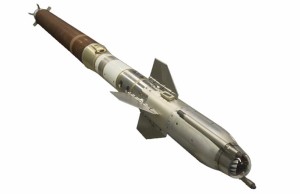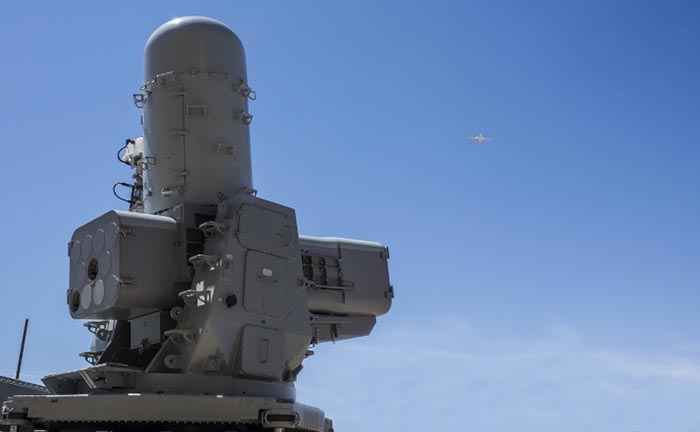SeaRAM steps up for success

Raytheon’s SeaRAM® anti-ship missile defense system used a Rolling Airframe Missile Block 2 for the first time to intercept an incoming target during a US Navy live-fire exercise at China Lake, California, recently.
The SeaRAM system detected, tracked and engaged an inbound threat, and fired a RAM Block 2 that successfully intercepted the target.
Meanwhile, the US Navy has awarded Raytheon a $66.6 million firm-fixed-price contract for fiscal year 2016 for Rolling Airframe Missile (RAM) Block 2 guided missiles. The contract also includes options which, if exercised, would bring the cumulative value to $142.8 million, and includes an option for foreign military sales to an international customer.
RAM is a cooperative program between the US and German governments with industry support from Raytheon and RAMSYS of Germany. The contract calls for production work to be shared between both companies.
Rick Nelson, vice president of Raytheon’s Naval Area and Mission Defense product line said RAM Block 2 added important enhancements to counter a bigger set of targets and give warfighters an unfair advantage
The recent test firing saw the SeaRAM configured with a Phalanx close-in weapon system for the test, similar to the way the two systems would be deployed together on US Navy destroyers.
Mr Nelson said SeaRAM continued to demonstrate how vital a weapon it was for defending navies against anti-ship missiles.
“Raytheon’s close-in defense systems can provide warfighters with a capability found nowhere else, and help the U.S. Navy extend its reach with a layered defense that can counter various threats.”

RAM Block 2, which reached Initial Operating Capability in May, 2015, adds enhanced kinematics, an evolved radio frequency receiver and an improved control system.
The successful demonstration followed the US Navy’s an earlier successful SeaRAM firing of a RAM Block 1 from a littoral combat ship.
About RAM
RAM is a supersonic, quick reaction, fire-and-forget missile providing defense against anti-ship cruise missiles, helicopter and airborne threats, and hostile surface craft.
The missile’s autonomous dual-mode, passive radio frequency and infrared guidance design make it capable of engaging multiple threats simultaneously.
RAM is installed, or planned for installation, aboard more than 165 ships as an integral self-defense weapon for the navies of Egypt, Germany, Greece, Japan, the Republic of Korea, Turkey, the United Arab Emirates and the United States.
The RAM Block 2 upgrade includes a four-axis independent control actuator system and an increase in rocket motor capability, increasing the missile’s effective range and delivering a significant increase in maneuverability.
The improved missile also incorporates an upgraded passive radio frequency seeker, a digital autopilot and engineering changes in selected infrared seeker components.
About Close-in Defense Solutions
Raytheon’s Phalanx is a rapid-fire, computer-controlled radar and 20mm gun system that acquires, tracks and destroys enemy threats that have penetrated all other ship defense systems.
Intended to enlarge Phalanx’s keep-out range against evolving anti-ship missiles, rotary- and fixed-wing aircraft, unmanned aircraft systems and other threats, SeaRAM anti-ship missile defense systems use advanced Phalanx Block 1B sensors and replace the gun with an 11-round Rolling Airframe Missile guide.
.
.

.
.






